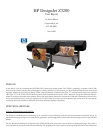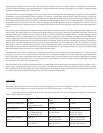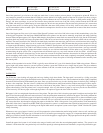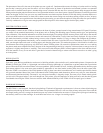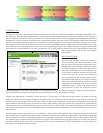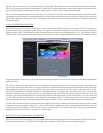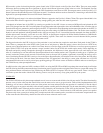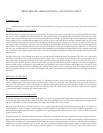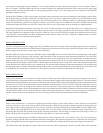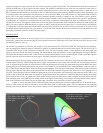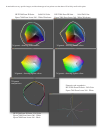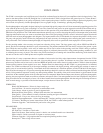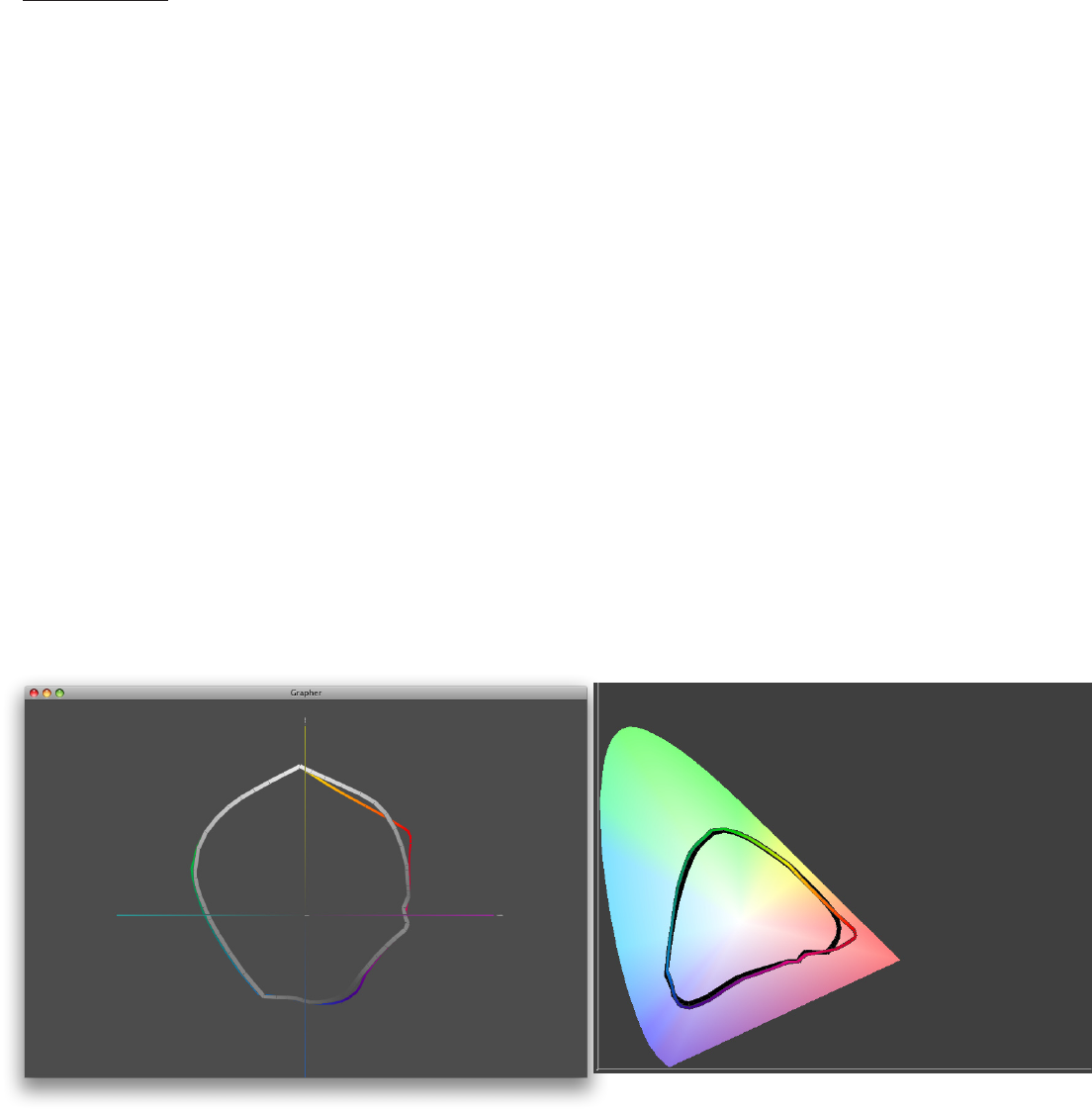
carefully developed to target a specic hue and increase the overall gamut of the printer. The additional hues make the translation of
CMYK (or RGB) data, to ink on paper a bit more complex. The problem is that there are now more ways to produce the same color us-
ing different mixes of ink. To produce a certain color of orange you could mix yellow and red, magenta and yellow, or some mix of all
three. To handle this HP embeds an “intelligence” they call multi-color separation technology (MCST) into the printer. Essentially a set
of screening tables, this system allows the print driver, as well as third part RIPs, to treat the printers as a large gamut RGB or CMYK
device. This is also what sometimes gets tweaked by rmware updates, resulting in changes to the color gamut of specic printers.
During the initial release period for the Z3100, rmware updates resulted in fairly drastic improvements to the printer’s performance
on matte paper. It is important to consider that if the color tables are altered in a meaningful way, then any calibration or ICC prole
will need to be redone. This applies to RIPs such as those from EFI’s Colorproof XF where calibrations build on the work done by the
MCST. Of course, there are RIPs that choose to bypass the MCST, requiring that user to control the 11 color ink limiting, and generate
a 7 color prole. While this offers maximum control over the printer, it requires a lot of work to achieve results that are as good as what
the MCST delivers. Balancing that many ink channels is not for the faint of heart. However an investment of time and resources could
potentially yield better results on oddball 3rd party papers.
COLOR GAMUT
The Z3200 is able to produce an amazing range of colors. I spent a fair amount of time looking at gamut plots, 3d representations built
from the ICC proles that describe the range of colors a printer can produce. While they don’t always tell the whole story, they are useful
for comparing printer’s ink sets.
The rst set of gamut plots (in 2D) show the change in color gamut between the Z3100 and Z3200. The Z3100 produced excellent re-
sults on photographic media but showed a tendency to produce an undersaturated red on certain matte papers. The use of the Type 73
“Chromatic Red” on the Z3200 is designed to address this issue. You can see the red “bump” is most apparent on the matte paper, and
rightly so since this was the area that was lacking. The reformulation of the red resulted in a very slight reduction of orange in the mid-
tone region but the improvement in red is seen all the way down into the shadows. In real world testing the Z3200 red produced greater
chroma, improved detail and contrast on matte papers, and subtly improved red on photo papers.
On luster/satin paper, the total gamut volume of the Z3200 is surpassed by the Epson 7/990 but is larger than the 7/9880. But this is a
somewhat poor criteria by which to judge the printer. Larger color gamuts are a good thing when utilized, and of no advantage when not
used. To support this point, there are colors that the Z3200 can produce that are outside the gamut of the large Adobe RGB color space,
meaning that you will actually under-utilize the printer’s true potential if you send sRGB or even Adobe RGB data. In the test I ran us-
ing a Z3200, Epson 7900 and Epson 7880 a few things became apparent. First, both the Z3200 and the 7900 produced prints with better
looking greens than the 7880. More people preferred the way the Z3200 rendered foliage than the 7900, but we we’re splitting hairs at
this point. The red on the Z3200 was undeniably preferred out of all of the printers, and interestingly the red/orange of the 7900 is very
similar to that of the Z3100. Blues were a bit harder to judge. Depending on the prole used, all three of the printers produced excellent
results with no clear winner. In general the Z3200 tended to produce the noticeable better results in lighter saturated greens and reds.
Dark saturated colors, aside from red, were slightly better on the Epson printers but by a small margin, showing another area of improve-
ment in the Z3200 over the Z3100. The test on matte paper yielded the same conclusions as those on photo paper.
I think it’s safe to say that both the Z3200 and Epson 7900 are pushing the envelope of pigmented ink. To be honest the po-
tential of either printer will only be realized by certain individuals with very demanding needs. Fine art reproduction and packaging
proong come to mind. HP now claims 95% pantone coverage, a really remarkable number. The differences in gamut will probably only
Z3100 (white) and Z2100 (color solid)
Z3200 Matte Litho Paper - Full Color
Z3100 Matte Litho Paper - White
L*a*b* plot
Z3200 Matte Litho paper - Full Color
Z3100 Matte Litho paper - White
CIE chromaticity diagram



